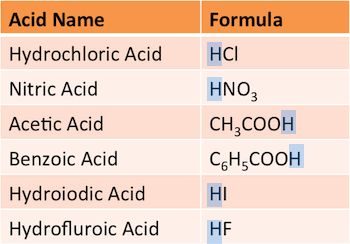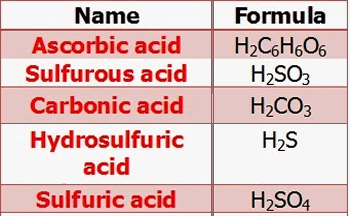Polyprotic and monoprotic acids.
Let's see some examples.
The proton that is donated is shaded in blue.

Diprotic acids are capable of donating two protons while triprotic acids can donate up to three protons.


A polyprotic acid ionizes in successive stages.
The first ionization stage of sulfuric acid is shown on the right.
![]()
The second stage of ionization now takes place and is shown on the right.
![]()
HSO4-, however, is a weak acid and will only partially ionize in water. This is represented by the uneven arrows. As a polyprotic acid loses protons in successive ionization reaction the negative charge on the acid ion increases making it harder for the remaining protons to be donated, hence making the acid weaker at each successive ionization stage.
1. Phosphoric acid is a triprotic acid. Consider the reaction of phosphoric acid with water.
Write a balanced chemical equation, with states and arrows to represent the:
- first ionization stage .
Solution
- second ionization stage
Solution
- third ionization stage
Solution
![]()
2. Consider the following species, HSO4- , SO4-2 and H2SO4.
i. Identify the amphiprotic species, base and acid.
ii. Identify two acid/base conjugate pairs
iii. Place the three species on the spectrum below.
strong acid ------------------------------------------- strong base
Solution

3. Write balanced equations, with states and arrows, for the successive ionization stages of H3AsO4 in water
Solution
